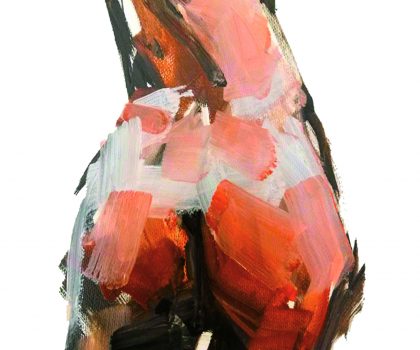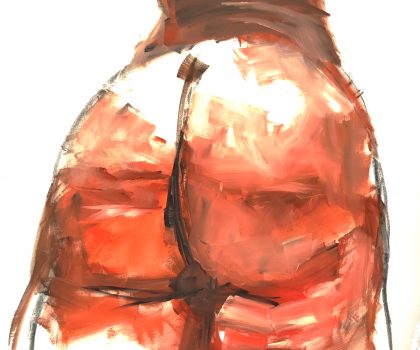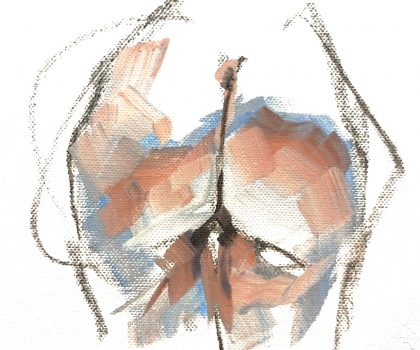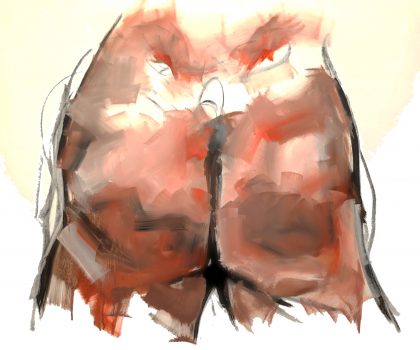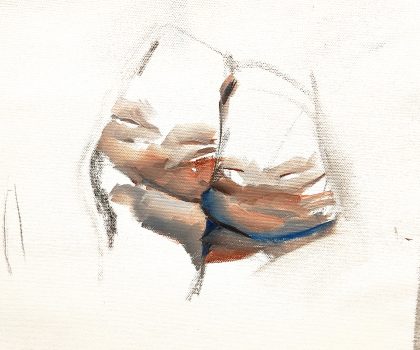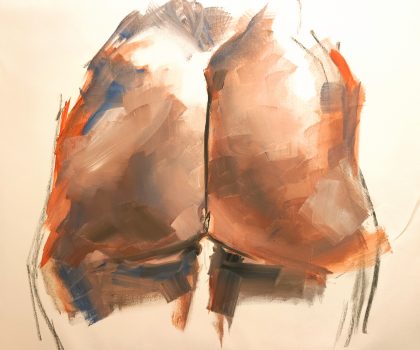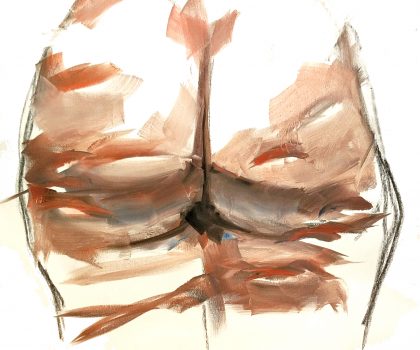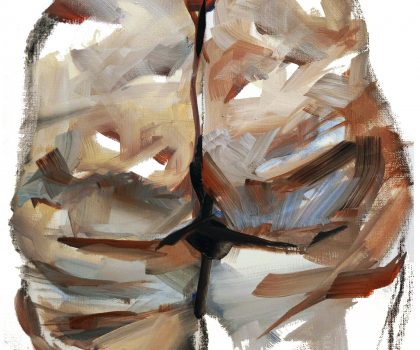Alessandro Alghisi disegna e dipinge la figura umana dal vero.
Con queste opere intende evitare i temi più consumati e ripetitivi che spesso eludono un confronto diretto con la pittura.
Affrontando invece un soggetto scomodo, talvolta spietato, la pittura è ricondotta all'essenza della sua poesia.
Liberata da vincoli estetici la pittura è restituita alla sua pratica, dove ritornare alla ricerca di una sempre maggior perfezione esecutiva. Un esercizio di dominio del gesto e controllo dei volumi, un mestiere ostinato tra la realtà e l’immediatezza della sua rappresentazione.
Perché il soggetto della pittura è solo la pittura stessa.
Alessandro Alghisi draws and paints the human figure from life. With these works, he seeks to avoid the overused and repetitive themes that often sidestep a direct engagement with painting. Instead, by tackling an uncomfortable, sometimes ruthless subject, painting is brought back to the essence of its poetry. Freed from aesthetic constraints, painting is returned to its practice, where the search for ever-greater technical perfection resumes. It is an exercise in mastery of gesture and control of volumes, a stubborn craft caught between reality and the immediacy of its representation. Because the subject of painting is, in truth, only the painting itself.
Con queste opere intende evitare i temi più consumati e ripetitivi che spesso eludono un confronto diretto con la pittura.
Affrontando invece un soggetto scomodo, talvolta spietato, la pittura è ricondotta all'essenza della sua poesia.
Liberata da vincoli estetici la pittura è restituita alla sua pratica, dove ritornare alla ricerca di una sempre maggior perfezione esecutiva. Un esercizio di dominio del gesto e controllo dei volumi, un mestiere ostinato tra la realtà e l’immediatezza della sua rappresentazione.
Perché il soggetto della pittura è solo la pittura stessa.
Alessandro Alghisi draws and paints the human figure from life. With these works, he seeks to avoid the overused and repetitive themes that often sidestep a direct engagement with painting. Instead, by tackling an uncomfortable, sometimes ruthless subject, painting is brought back to the essence of its poetry. Freed from aesthetic constraints, painting is returned to its practice, where the search for ever-greater technical perfection resumes. It is an exercise in mastery of gesture and control of volumes, a stubborn craft caught between reality and the immediacy of its representation. Because the subject of painting is, in truth, only the painting itself.



